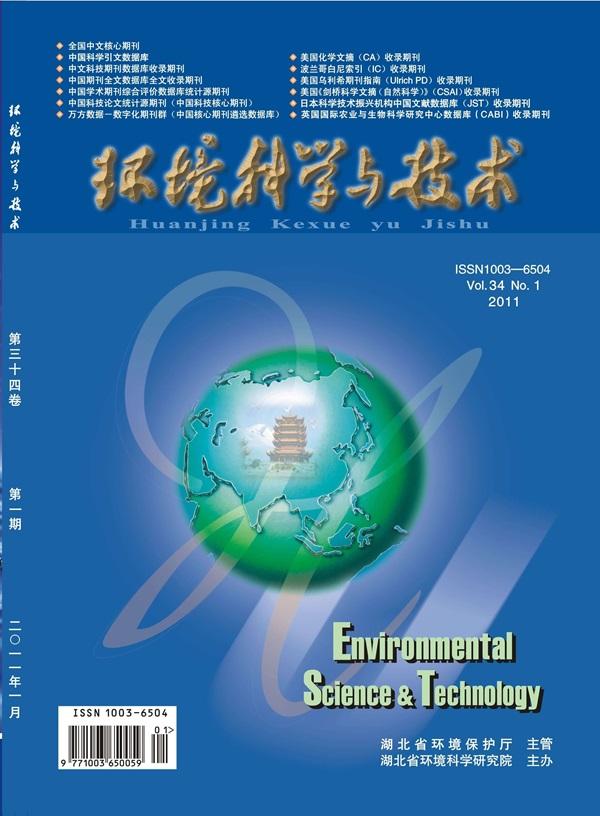Properties and Reactivity of Iron-Organic Matter-Arsenic Composites and their Influence on Arsenic Behavior in Microbial Reduction and Oxidation Processes
IF 10.8
1区 环境科学与生态学
Q1 ENGINEERING, ENVIRONMENTAL
引用次数: 0
Abstract
The biogeochemistry of arsenic in soils is strongly controlled by iron oxides and soil organic matter (SOM). The present study intends to elucidate the behavior of arsenic in Fe-SOM-As composites formed through adsorption or coprecipitation under redox conditions. The X-ray diffraction (XRD) and high resolution transmission electron microscopy (HRTEM) showed that crystalline minerals were generated during Fe-HA-As coprecipitation, while other composites exhibited an amorphous structure. In an anoxic environment, iron-reducing bacteria reduced Fe(III) and As(V) to Fe(II) and As(III), respectively, enhancing the mobility of arsenic. The presence of SOM increased the concentrations of dissolved Fe(II) and As(III) through complexation. Notably, elevated As(III) and reduced Fe(II) were observed in the HA-containing coprecipitation group due to the weak adsorption capacity of crystalline minerals, which released As(V) into solution and competed with Fe(III) for electrons. Under oxic conditions, superoxide, hydrogen peroxide, and hydroxyl radical (•OH) were formed through the oxidation of Fe(II) and reduced SOM. As(III) was subsequently oxidized by superoxide and •OH, and the process was dominated by •OH. Substantial •OH in the HA-containing coprecipitation group mainly oxidized dissolved As(III), while limited •OH in other groups contributed greater to adsorbed As(III). These findings contribute substantially to understanding the mechanisms of the coupled transformation of iron and arsenic in soil under fluctuating redox conditions.

土壤中砷的生物地球化学受到铁氧化物和土壤有机质(SOM)的强烈控制。本研究旨在阐明在氧化还原条件下通过吸附或共沉淀形成的 Fe-SOM-As 复合材料中砷的行为。X 射线衍射(XRD)和高分辨率透射电子显微镜(HRTEM)显示,Fe-HA-As 共沉淀过程中产生了结晶矿物,而其他复合材料则表现出无定形结构。在缺氧环境中,铁还原菌将铁(III)和砷(V)分别还原成铁(II)和砷(III),从而增强了砷的流动性。SOM 的存在通过络合作用增加了溶解的 Fe(II) 和 As(III) 的浓度。值得注意的是,在含 HA 的共沉淀组中观察到 As(III) 升高,Fe(II) 降低,这是由于结晶矿物的吸附能力较弱,将 As(V) 释放到溶液中,与 Fe(III) 争夺电子。在氧化条件下,Fe(II)和还原 SOM 氧化形成超氧化物、过氧化氢和羟基自由基 (-OH)。随后,As(III)被超氧化物和-OH氧化,这一过程以-OH为主。含HA共沉淀组中大量的-OH主要氧化溶解的As(III),而其他组中有限的-OH对吸附的As(III)贡献更大。这些发现大大有助于理解土壤中铁和砷在波动氧化还原条件下的耦合转化机制。
本文章由计算机程序翻译,如有差异,请以英文原文为准。
求助全文
约1分钟内获得全文
求助全文
来源期刊

环境科学与技术
环境科学-工程:环境
CiteScore
17.50
自引率
9.60%
发文量
12359
审稿时长
2.8 months
期刊介绍:
Environmental Science & Technology (ES&T) is a co-sponsored academic and technical magazine by the Hubei Provincial Environmental Protection Bureau and the Hubei Provincial Academy of Environmental Sciences.
Environmental Science & Technology (ES&T) holds the status of Chinese core journals, scientific papers source journals of China, Chinese Science Citation Database source journals, and Chinese Academic Journal Comprehensive Evaluation Database source journals. This publication focuses on the academic field of environmental protection, featuring articles related to environmental protection and technical advancements.
 求助内容:
求助内容: 应助结果提醒方式:
应助结果提醒方式:


